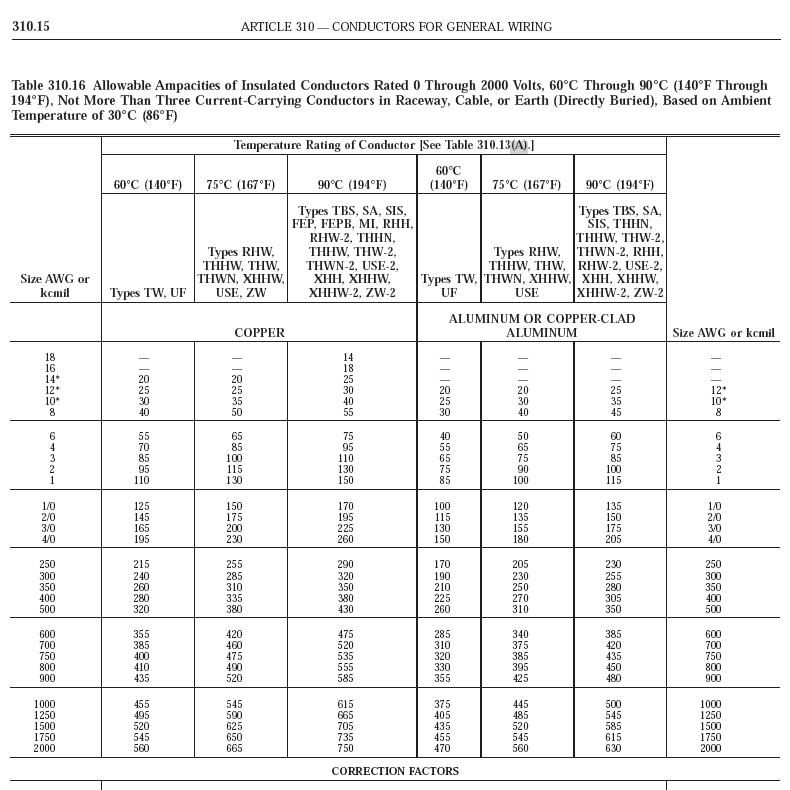
scmn | The only way for the wire to melt down is to run over rated current of the wire for a sufficient time to raise the temperature of the wire above its safe working limit. Wire sizes have different ratings depending on material and insulation rating temperature, see chart below. With 60C insulation, wire temperature needs to stay below 60C to prevent insulation from melting. This is due to the wire having internal resistance to current flow (ohms law), which in turn generates heat at a rate of I2R and dissipated at a given rate. The NEC assumes an ambient temperature which determines cooling rate of wire and thus with a target steady state temperatures of 60C,75C, & 90C the maximum currents can be determined. Thus a #6 conductor can have ampacity ratings from 40A-75A depending on wire and insulation materials. These rating are for steady state current.

Looking at Ohms law a short circuit will cause a near 0 resistance situation and push current infinitely high since I=V/R. In a typical circuit the breaker servers two functions: 1) protect conductors from short circuit, 2) protect conductors from drawing more current than they are rated to carry. In a motor circuit with a motor that has an OCPD the breaker serves function 1 and the motor OCPD serves function 2. The motor OCPD protects the motor from melting down and also protects the conductors ahead of it because it will open the circuit when the current exceeds motor rating. The breaker is merely protecting against a short circuit, which trips immediately before wire can heat up, thus protecting the conductors. If you put a 30A breaker on a motor that draws 30A you will have trouble tripping the breaker when starting the motor due to inrush current. Since the inrush current occurs for only a couple seconds, it does not overheat the wire and this is why the NEC has special rules for devices like motors, welders, etc where the device has internal protections to protect device against over current that also protect the supply conductors and thus allowing a larger breaker to prevent nuisance trips.
Hate to break it to you, but your opinion that this is unsafe is wrong because the wire is being protected from short circuit by the breaker and over current by the motor; there is nothing wrong with using larger conductors than necessary, it just gets to be hard on the pocket book hence why the NEC made these rules. |


 How big of wire do I need?
How big of wire do I need?